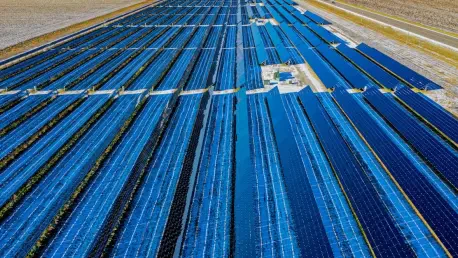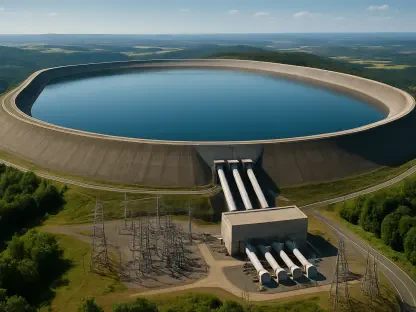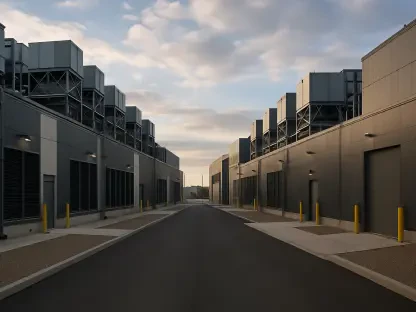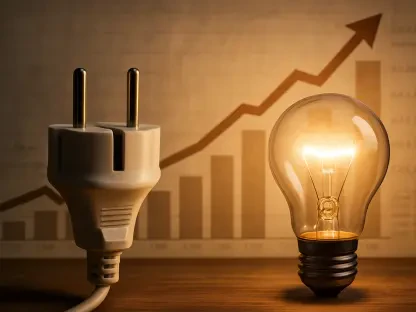Christopher Hailstone has extensive experience with energy management, renewable energy, and electricity delivery. He is also our Utilities expert and provides valuable insights on grid reliability and security. Today, he will share his thoughts on the current state and future of the solar energy industry.
Could you elaborate on the importance of the Inflation Reduction Act for the solar industry?
The Inflation Reduction Act plays a critical role by offering extensive tax incentives that bolster investment in solar technology. These incentives not only reduce financial barriers for solar projects but also stimulate significant growth within the industry. The Act’s support mechanisms are crucial for ensuring that solar energy remains a competitive and attractive option within our evolving energy landscape.
How has solar energy contributed to boosting American manufacturing?
Solar energy has substantially fortified American manufacturing, primarily by driving demand for domestically produced solar components. The sector’s growth has led to the establishment of new factories, bringing countless jobs and revitalizing local economies. This surge in activity highlights the broader economic benefits tied to the clean energy transition.
What impact does increasing electricity demand have on the solar industry?
As electricity demand surges, solar energy offers an immediately deployable solution to meet these needs. Solar technology’s scalability and relatively quick deployment timelines make it an invaluable asset, particularly as traditional power sources face bottlenecks and delays. This rapid responsiveness allows solar energy to contribute meaningfully to grid stability and energy security.
Why is it crucial not to strand investments made by American businesses in local economies?
Stranding investments means underutilizing existing resources and potentially shutting down new ventures, which can have profound economic repercussions. Keeping these investments active ensures that the benefits – including job creation, economic stimulation, and technological advancement – are not lost and that momentum in the sector is sustained.
Can you discuss the effects of the Trump administration’s trade policies on the clean energy industry?
The Trump administration’s trade policies introduced tariffs and a degree of unpredictability that reverberated through the clean energy sector. These measures increased costs for imported components, discouraged international collaboration, and fostered an atmosphere of uncertainty. Consequently, this hindered the smooth progression of clean energy projects and shook investor confidence.
What role does the international supply chain play in the production of clean energy technologies like solar panels, offshore wind turbines, and batteries?
The international supply chain is indispensable for clean energy technologies. Many of the essential materials and components required come from global markets, and without this network, the production and assembly of solar panels, wind turbines, and batteries would be significantly hampered. Thus, international cooperation is vital for the industry’s health and expansion.
Are there any efforts to build a domestic supply chain for rare earths and minerals needed for clean energy technologies?
Yes, there are ongoing efforts to establish a domestic supply chain to lessen dependency on foreign sources. Initiatives include exploring local mineral reserves, investing in recycling technologies, and fostering partnerships between government and industry players to develop sustainable supply chains within the U.S. This self-reliance aims to buffer against global market volatilities.
How has the uncertainty caused by tariffs and other policy initiatives affected investors and the financial markets?
Tariff-induced uncertainty has made investors wary, stalling financial commitments and delaying projects. The lack of clarity can disrupt financial markets, making it challenging for financiers to predict returns and allocate resources confidently. This stress on financial predictability can stymie the sector’s growth and discourage new investments.
What are some potential supply chain concerns for large infrastructure projects in the clean energy sector?
Supply chain issues, including raw material scarcity, logistical bottlenecks, and geopolitically driven disruptions, are significant concerns. Without a stable supply chain, the risk of delays and cost overruns increases, threatening the timely and cost-effective completion of large projects essential for clean energy transitions.
The U.S. Energy Information Administration forecasts a 35% increase in solar generation this year. What factors are driving this growth?
Several factors drive this remarkable growth, including technological advances that reduce costs, favorable policies like the Inflation Reduction Act, growing investor confidence, and increasing electricity demand. Additionally, consumer awareness and environmental concerns continue to propel the adoption of solar technologies.
What can you tell us about the solar projects that are leading in interconnection queues across the country?
Solar projects are at the forefront of interconnection queues due to their scalability and ease of integration into existing grid structures. Their leadership in these queues underscores the readiness and capacity of solar energy to meet current and future energy demands swiftly and efficiently.
How are deployment delays in gas generation affecting the clean energy sector?
Delays in gas generation projects push utilities and policymakers to seek alternatives, often turning to solar and storage solutions. As these delays highlight the vulnerabilities of traditional energy sources, they inadvertently boost the attractiveness and necessity of renewable options, providing an indirect impetus for the clean energy sector’s expansion.
What message are you conveying to Congress about the importance of solar and storage in meeting growing electricity demand?
Our core message is that solar and storage are not merely supplemental to the energy mix; they are essential. Given their ability to quickly scale and adapt to growing demands, they provide not only environmental benefits but crucial support for energy reliability and security. We communicate that supporting these technologies is vital for a resilient and forward-looking energy strategy.
Why is preserving the 45X manufacturing tax credit essential for increasing solar manufacturing capacity in the U.S.?
The 45X manufacturing tax credit is fundamental for fostering domestic production of solar components. By offering financial incentives for manufacturing, this credit ensures that the U.S. can build a robust local industry, mitigating the risks of relying solely on imports and enhancing national energy independence.
Can you explain the significance of the 48E investment tax credit and the 25D rooftop solar tax credit for the solar market?
The 48E investment tax credit and the 25D rooftop solar tax credit are crucial incentives that drive both utility-scale projects and residential solar adoption. These credits lower upfront costs, making solar investments more attractive and accessible, thus driving widespread deployment and contributing to overall market growth.
Do you believe there is bipartisan support in Congress for maintaining the IRA’s tax credits?
Indeed, there appears to be bipartisan support for the IRA’s tax credits. This support is evident from the vocal backing of numerous Republican representatives and senators. Their endorsement signifies a shared acknowledgment across party lines of the economic and strategic benefits these credits bring to the solar industry and wider economy.
What strategies are Solar United Neighbors using to convince lawmakers that the economics of solar are beneficial for consumers?
Solar United Neighbors focuses on concrete economic benefits, showcasing how solar power reduces electricity bills and provides long-term savings for consumers. By presenting real-world examples of everyday constituents benefiting economically, they build a strong case for the financial advantages of solar energy to lawmakers.
Could you share the story of the constituent of Rep. Mariannette Miller-Meeks and how solar energy has benefitted his church economically?
A constituent shared how his local church saved over $300 monthly on electricity bills by adopting solar power, courtesy of the direct pay part of the ITC. These savings significantly enhanced the church’s ability to reinvest in charitable activities, emphasizing financial benefits over environmental arguments in impactful and relatable terms.
Why is it important to emphasize the economic benefits of solar energy over environmental arguments when discussing with certain lawmakers?
Focusing on economic benefits aligns more closely with the interests and priorities of certain lawmakers who may be more driven by financial impact than environmental considerations. This approach helps in creating a compelling and relatable narrative that underscores the practical benefits of solar energy for constituents and the economy.
Do you have any advice for our readers?
Stay informed about renewable energy policies and their personal and community-level impacts. Advocate for policies that support clean energy, as grassroots efforts can significantly influence political decisions. Empower yourself with knowledge and use it to drive change in your spheres of influence.









